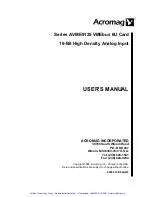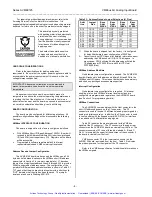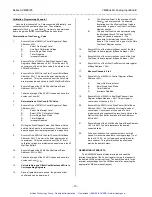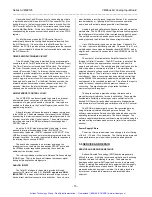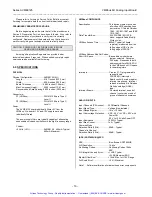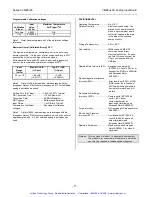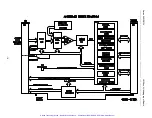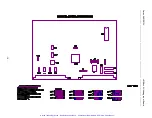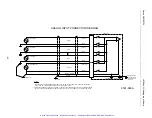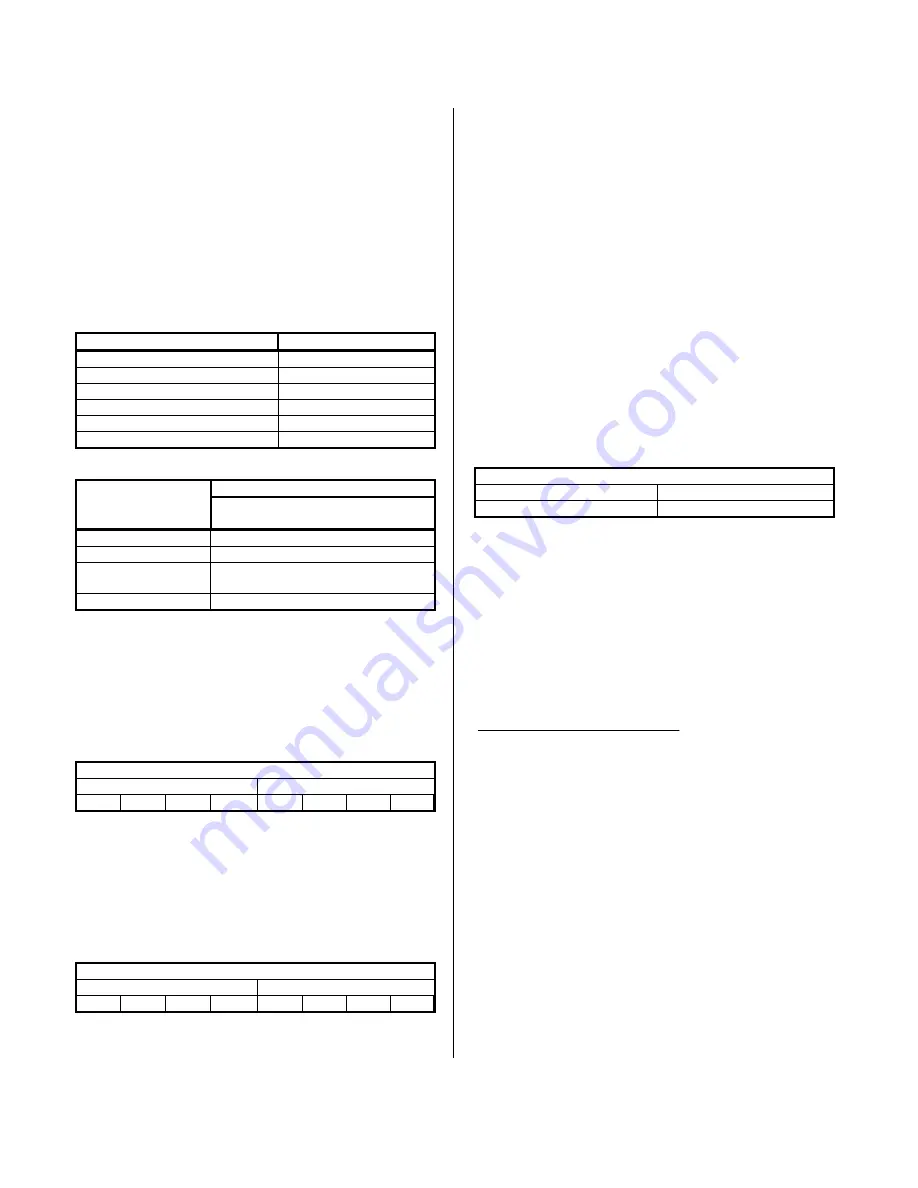
Series AVME9125 VMEbus 6U Analog Input Board
___________________________________________________________________________________________
- 8 -
The function of each of the control register bits are described
in Table 3.3. The control register can be read or written with either
8-bit or 16-bit data transfers. A power-up or system reset sets all
control register bits to zero.
Analog Input Range and Corresponding Digital Output Code
The ideal input voltage corresponding to the
±
10 volt input
range is given in Table 3.4. In Table 3.5 the digital output code
corresponding to each of the ideal analog input values is given.
The hex codes for the converted digital output values are returned
in binary two’s complement format.
Table 3.4: Supported Full-Scale Ranges and Ideal Analog
Input
DESCRIPTION
ANALOG INPUT
Input Range
±
10V
LSB (Least Significant Bit) Weight
305
µ
V
+ Full Scale Minus One LSB
9.999695Volts
Midscale
0V
One LSB Below Midscale
-305
µ
V
- Full Scale
-10V
Table 3.5: Digital Output Codes and Input Voltages
DIGITAL OUTPUT
Binary 2’s Comp
DESCRIPTION
(Hex Code)
+ Full Scale - 1 LSB
7FFF
Midscale
0000
1 LSB Below
Midscale
FFFF
- Full Scale
8000
Interrupt Vector Register (Read/Write, 45H)
The Vector Register can be written with an 8-bit interrupt
vector. This vector is provided to the system bus upon an active
interrupt acknowledge cycle. Read or writing to this register is
possible via 16-bit or 8-bit data transfers. 16-bit data transfers will
implement simultaneous access of the Interrupt Vector and Timer
Prescaler registers. The register contents are cleared upon reset.
Interrupt Vector Register
MSB
LSB
07
06
05
04
03
02
01
00
Interrupts are released on an interrupt acknowledge cycle.
Reading of the interrupt vector during an interrupt acknowledge
cycle signals the board to remove its interrupt request.
Timer Prescaler Register (Read/Write, 44H)
The Timer Prescaler register can be written with an 8-bit value
to control the time interval between conversions.
Timer Prescaler Register
MSB
LSB
15
14
13
12
11
10
09
08
This 8-bit number divides an 8 MHz clock signal. The clock
signal is further divided by the number held in the Conversion
Timer Register. The resulting frequency can be used to generate
periodic triggers for precisely timed intervals between conversions.
The Timer Prescaler has a minimum allowed value
restriction of 5A hex or 90 decimal.
A Timer Prescaler value of
less then 90 (decimal) will result in an empty Mail Box Register
buffer.
Read or writing to this register is possible via 16-bit or 8-bit
data transfers. A 16-bit data transfer will implement simultaneous
access to the Interrupt Vector and Timer Prescaler registers. The
Timer Prescaler register contents are cleared upon reset.
The formula used to calculate and determine the desired
Timer Prescaler value is given in the Conversion Timer section
which follows immediately.
Conversion Timer Register (Read/Write, 46H)
The Conversion Timer Register can be written to control the
interval time between conversions. Read or writing this register is
possible with either 16-bit or 8-bit data transfers. This register’s
contents are cleared upon reset.
Conversion Timer Register
MSB
LSB
15 14 13 12 11 10 09 08
07 06 05 04 03 02 01 00
This 16-bit number is the second divisor of an 8MHz clock
signal and is used together with the Timer Prescaler Register to
derive the frequency of periodic triggers for precisely timed
intervals between conversions.
The interval time between conversions is generated by
cascading two counters. The first counter, the Timer Prescaler, is
clocked by an 8MHz clock signal. The output of this clock is input
to the second counter, the Conversion Timer, and this output is
used to generate periodic trigger pulses. The time period between
trigger pulses is described by the following equation:
Timer Prescaler Conversion Timer = T in seconds
∗
8
µ
Where:
T
= time period between trigger pulses in microseconds.
Timer Prescaler
can be any value between 90 and 255
decimal.
Conversion Timer
can be any value between 1 and
65,535 decimal.
The maximum period of time which can be programmed to
occur between conversions is (255
∗
65,535)
÷
8 = 2.0889
seconds. The minimum time interval that can be programmed to
occur is 11.25
µ
seconds which can be implemented as (90
∗
1)
÷
8. Any combination of the Timer Prescaler and Conversion Timer
are allowed as long as the Timer Prescaler value used is not
programmed to a value below 90 decimal.
Artisan Technology Group - Quality Instrumentation ... Guaranteed | (888) 88-SOURCE | www.artisantg.com


